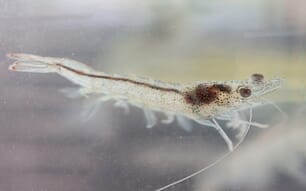Aquaculture is gradually being recognised by the governments of Latin America and the Caribbean as a powerful tool to increase the production of good quality protein at affordable prices to the most vulnerable groups of society, the FAO said.
Ministers of Fisheries and Aquaculture of 10 countries in the region participated in the First Meeting of the Council of Ministers of the Aquaculture Network for the Americas (ANA) which looked at measures to increase consumption and marketing of fish in Latin America and the Caribbean as a way of strengthening food security.
According to the FAO Representative in Chile, Alejandro Flores, there is significant room for increasing fish interregional trade in Latin America because, currently, 40 per cent of fish consumed in Latin America and the Caribbean come from other regions.
Alejandro Flores also pointed to Brazil and Colombia, countries which has grown fish consumption in recent years. In Brazil, the consumption per capita increased from 4 kg / year to 9 kg / year in the last 8 years through policies and campaigns to encourage consumption. In Colombia the increase was 4 kg / year to 6.1 kg / year for the last six years.
He recalled that the World Health Organization (WHO) recommends the consumption per capita of 12 kg of fish per year. The average world consumption per capita is 18 kg / year but, while the average for Latin America and the Caribbean is 9kg/year.
Strategies to increase consumption
The Minister of Production of Peru, Gladys Triveño, said that every time you get more aquaculture products and less direct extraction.
"We need to ensure aquaculture through the consumption of these resources as an important protein for the population," he said.
The Minister presented the campaign "To Eat Fish" and said it is "important advantage of new trends in the food, which in the case of Peru has driven the development of aquaculture of fish like flounder, and grouper cheetah".
Undersecretary of Fisheries and Aquaculture in Chile, Pablo Galilea, presented the keys of the strategy to increase the consumption of fish and seafood in Chile, which in this country ranges between 7.2 kg and 9.6 kilos per capita / year.
To the Minister of Agriculture of Guyana, Leslie Ramsammy, aquaculture has an important role in the fight against hunger and added that "fisheries, especially aquaculture, complete an important role in accelerating economic development."
"We are aware that aquaculture development is an essential tool for the growth of the region and that its success depends largely on our being able to make a coordinated effort between all of us," said the Minister of Economy, Development and Tourism, Felix Vicente, Chile.
The Chilean ministered also noted that small-scale farmers can make a fundamental contribution, but that they should be supported by tools to diversification.
One of the key axes of the Network of Aquaculture of the Americas is to support the sustainable development of limited resource farmers, numbering over 100 000 in the region and whose activity contributes significantly to food security and nutrition and rural employment.
Aquaculture Network for the Americas
Currently, the Network of Aquaculture of the Americas, RAA has 13 member countries and aims to reach 20 by the end of 2014.
With the support of the Government of Brazil, through the Fund for International Cooperation Brazil-FAO , the RAA has a fund for consolidation, through a project by FAO provides ongoing assistance.


